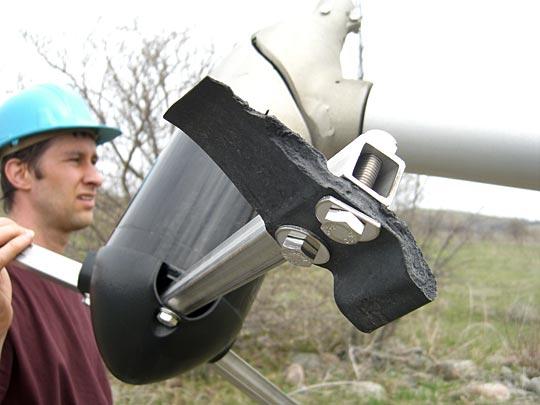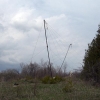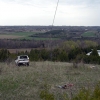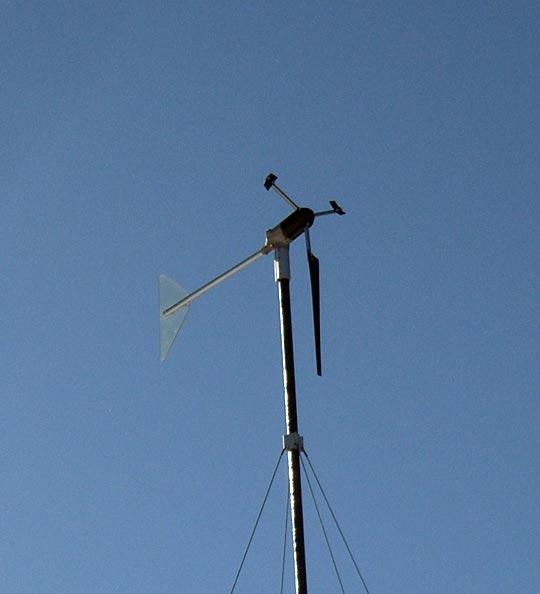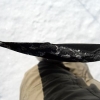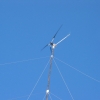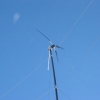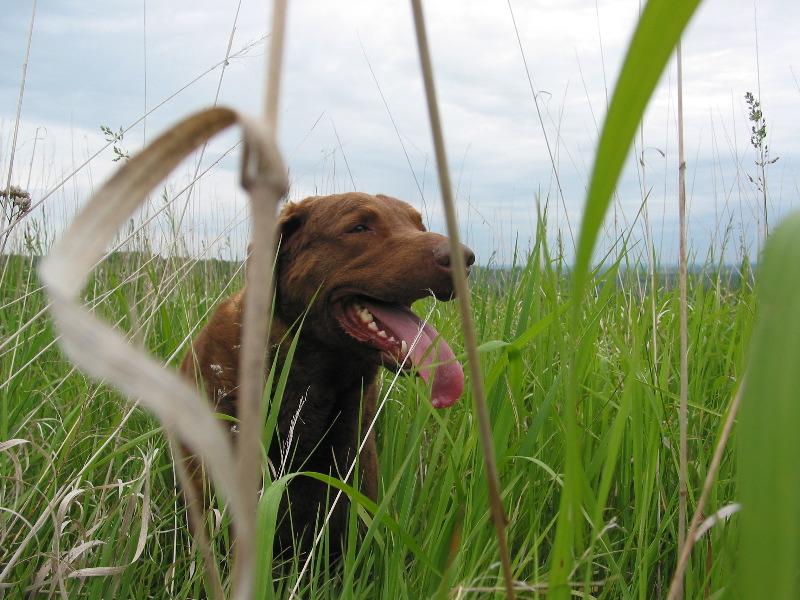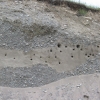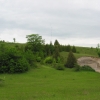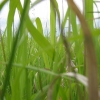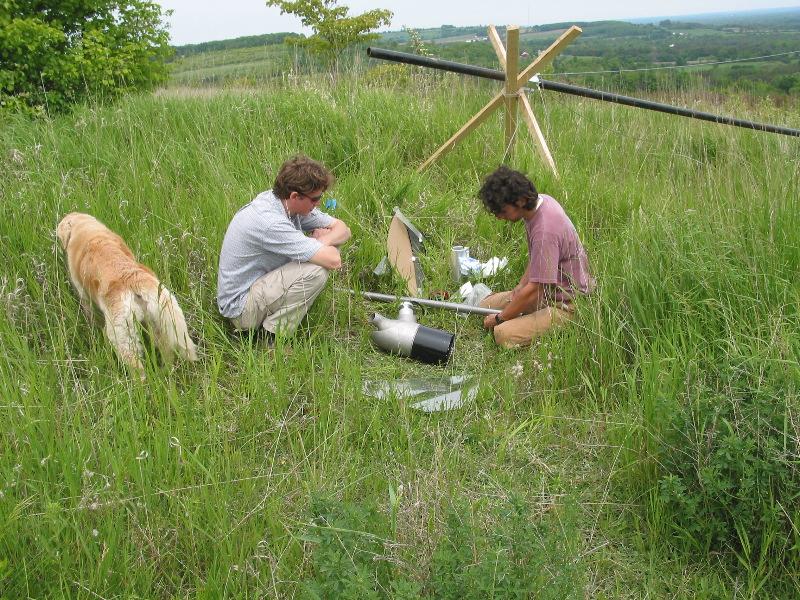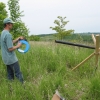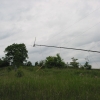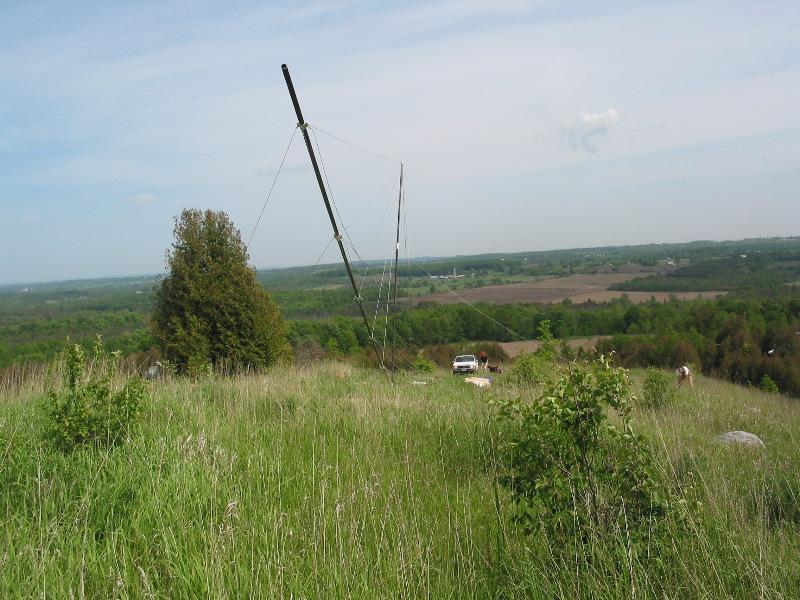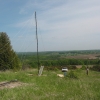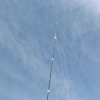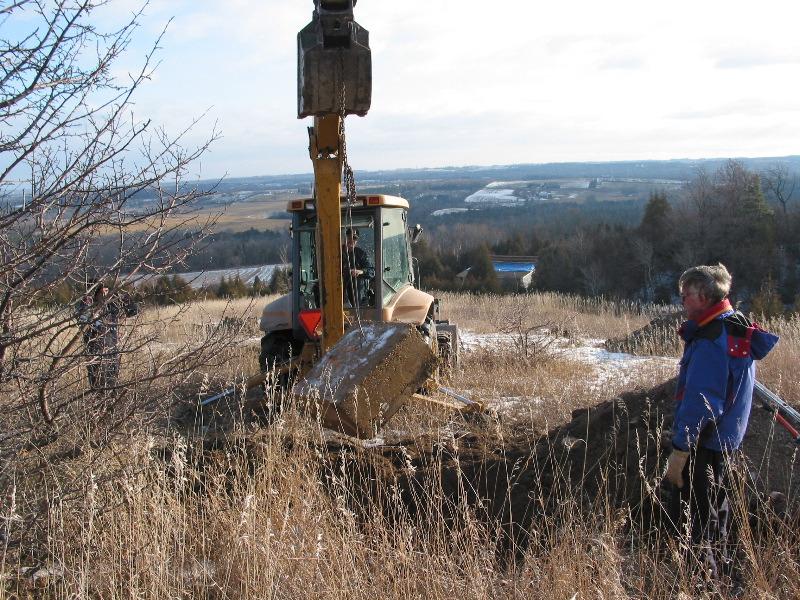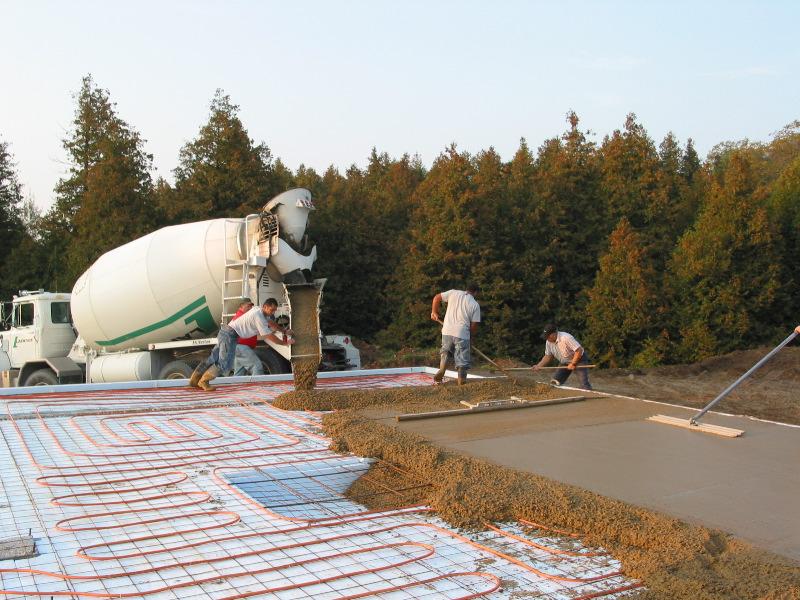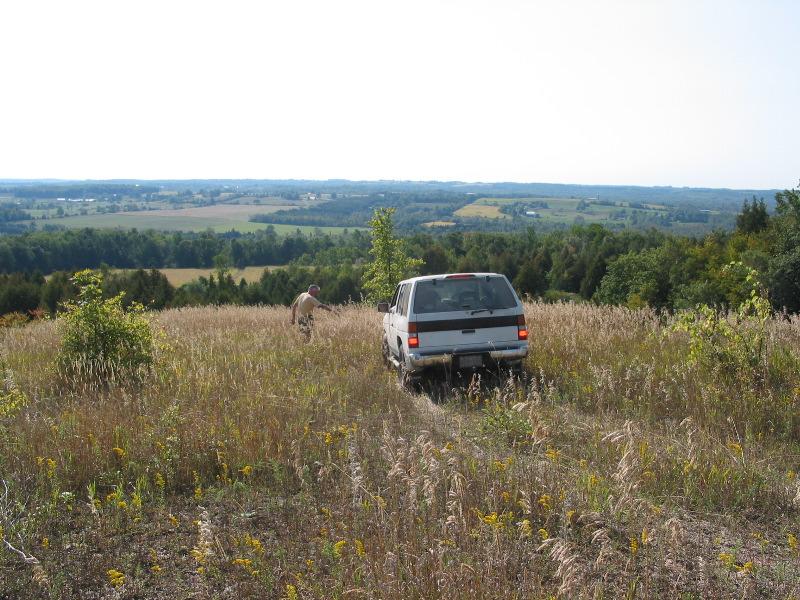Off-grid System Maintenance
I’m not sure why but some people seem to have it in their minds that living off-grid, generating your own electricity involves lots of work (though if tinkering is what you want it can, as a quick browse through the the archives of Homepower magazine will demonstrate). However for most people, myself included, the system takes care of itself quite well. So for the benefit of the curious I thought I’d detail the maintenance needs of the various parts of my system.
The Solar Panels
The panels themselves are solid state and require no maintenance. In the winter I prefer to brush off the snow, but that’s just because I don’t want to wait for the snow to melt off. If I’m up on the roof I usually do a quick inspection of the panels and racks just to make sure that nothing is loose or damaged in any way, and in the last year nothing has been.
Total Time: one hour every six months (if that)
The Wind Tower
Like the panels whenever I’m at the top of the hill I do a visual inspection of the tower, just to make sure nothing is obviously loose or noisy. Every two years the tower must be lowered to do an inspection of the generator itself, and lubricate/clean/tighten various parts.
Total Time: visual inspections / half day every other year
The Batteries
Once a week we try and make sure that the batteries get a full charge in them, this often means running the generator for a few hours. Once every month to three months (depending on the season) we do an equalize charge, which requires sun, wind, and the generator running all day. Every month I check the fluid levels of each cel, and top them up with distilled water if needed. Before and after an equalize charge I take readings of each cel with a hydrometer to measure the specific gravity of each cel, this is the most accurate method of determining stage-of-charge.
Total Time: half an hour every month
Electronics
I’m lumping the inverter, solar charge controller and wind charge controller into this group, and aside from monitoring (see below) there is no maintenance for any of this equipment, it’s all solid state.
Total Time: zero
Monitoring
Monitoring the system performance is important for many reasons: first it lets you know how your power generation and power consumption are comparing, which I think we can all agree is pretty vital, second by tracking base line numbers you’ll realize if something does go wrong. My biggest gripe with various aspects of the system is the lack of quality monitoring, especially where the wind generator is concerned. I keep a chart by the inverter and every night before I go to bed I write down how much the solar panels generated that day and cumulatively, the battery voltage, amp/hours away from full charge (which is an approximation), and details about whether the generator was run, if we achieved float, full charge, equalize, and if water levels were checked.
Total Time: two minutes each night
Gas Generator
Unfortunately this is still an important part of the system, and with months like November likely always will be. Aside from adding gas, I check the oil once a month, clean the air filter every other month, and just generally check it over whenever I gas it up.
Total Time: one hour every month
To sum up that comes out to about three hours every month, which is less time than I spend cutting the grass. Every couple of months I might have to spend an extra hour on some aspect of the system, and in fact most of the extras (like equalizing) are highly automated, start the generator at the beginning and stop it when the equalize is done.
For most people using a wind generator or solar panels in a grid inter-tie situation there is even less work to be done, since the vasy majority of my maintanence is the care and feeding of my batteries.
I have a well planned system installed by professionals (I recommend the fine folks at Generation Solar), if you’re a hard-core do-it-yourselfer your milage may vary, and if you go with some fly-by-night installers all bets are off. Remember when you’re talking to any kind of contractor ask lots of questions, if they can’t answer them in a way that you can understand that’s a bad sign. Ask for references, and CHECK THEM! Ask to see some systems they have installed, pay attention to the details, is the wiring neat and well routed? Does the system look like a pro job or some kid’s science fair project? How long have they been in business? How many systems have they installed? You might spend a bit extra but the results will be worth it.
-

- Posted by: Glen
- May, 18, 2004
